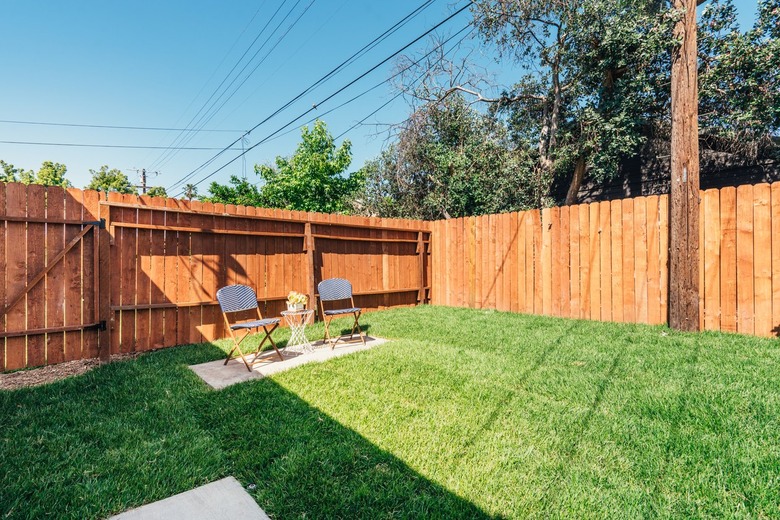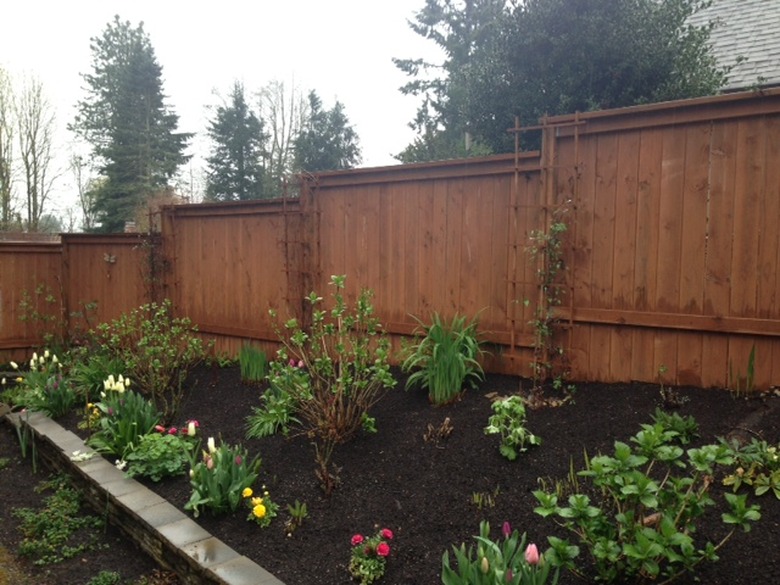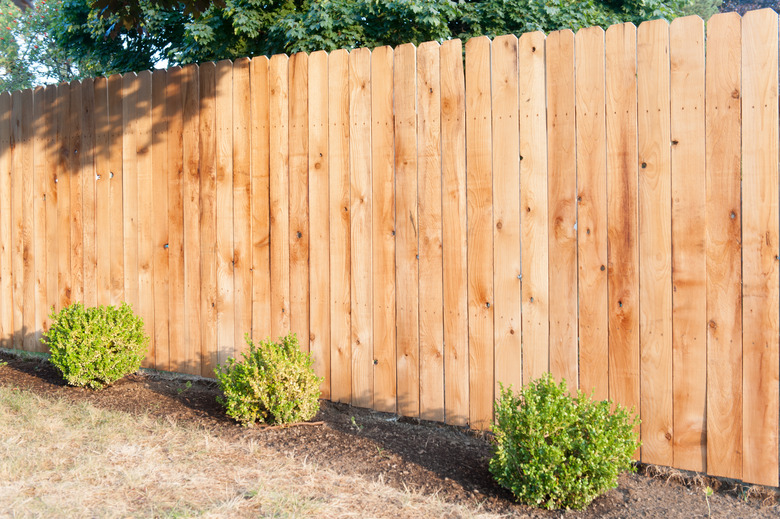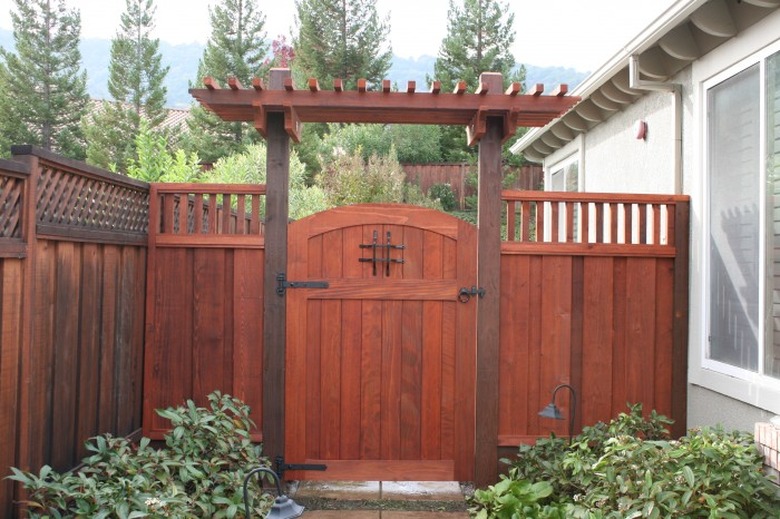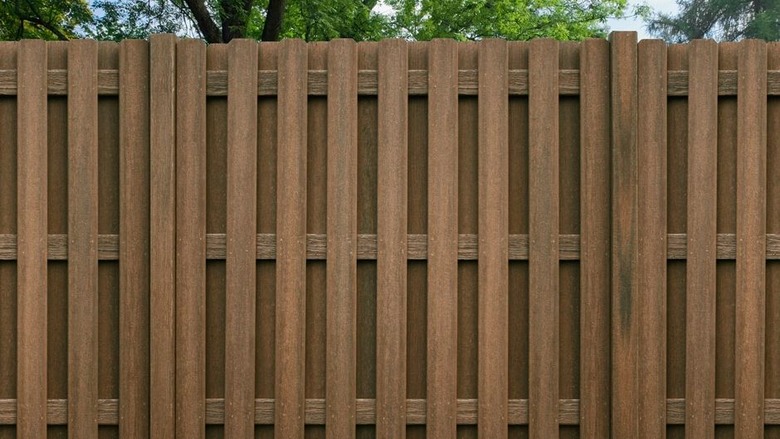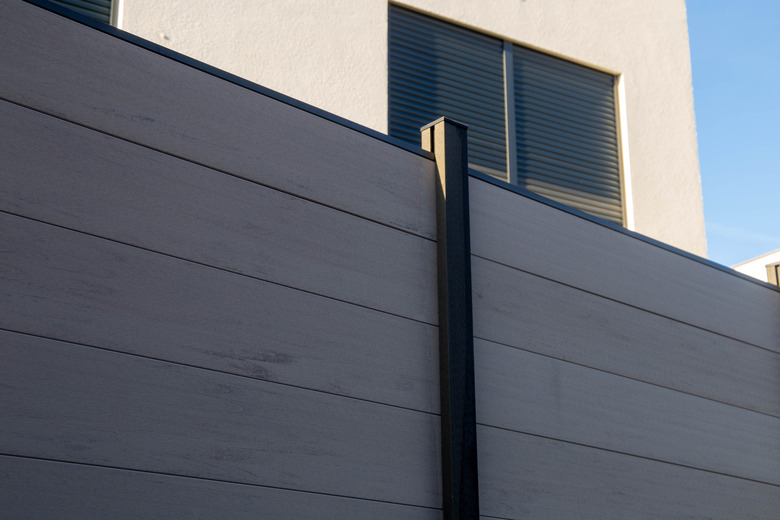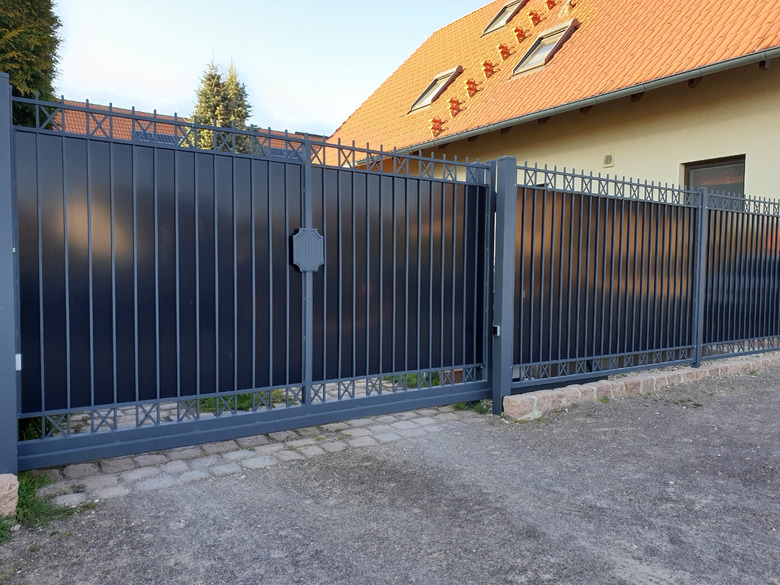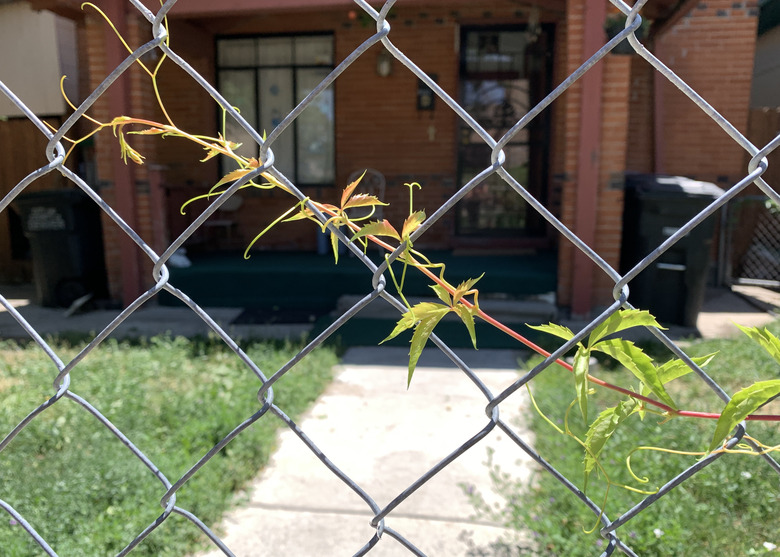The 7 Most Common Types Of Fences — And How To Choose One For Your Home
We may receive a commission on purchases made from links.
Given the high cost of fencing and the important role that fences play in the look and feel of a landscape, choosing a fence material is a big decision. You want your fence to last a long time and look good doing it. When choosing a fence material, you also want something that's easy to maintain and easy to work with, especially if you're installing the fence yourself. All of the popular fence materials — from various woods to vinyl to ornamental metal — come with specific pluses and, of course, a few minuses. The best option really depends on your priorities (and probably your budget).
1. Cedar
1. Cedar
Cedar is the most commonly used fence material for residential yards. It looks nice (if maintained) and is by far the most versatile material, as it can be used for many different styles of fencing, from basic plank panels to bespoke framed creations. Cedar (and other wood) is a good option for DIY installation because it is relatively forgiving of imprecision. On the downside, cedar is relatively high-maintenance, requiring regular finishing to prevent weathering. It's also one of the least durable fence materials; its planks are prone to shrinking, warping and splitting, and its posts commonly rot at the ground level and must be replaced.
2. Pressure-Treated Wood
2. Pressure-Treated Wood
Pressure-treated wood is the best option for a wood fence that you intend to paint. Pressure-treated lumber is less attractive than cedar or redwood but is more durable and costs less. You can also leave it unpainted if looks aren't a priority. For post material, use lumber that is rated for ground contact to prevent rot for as long as possible.
3. Redwood
3. Redwood
Redwood is a step up from cedar in looks and durability — but it comes at a cost. In general, redwood is a high-end option among wood fence materials but is still less expensive than wood options like teak or other tropical hardwoods. The highest grades of redwood are heartwood (as opposed to sapwood) and have tight grain and consistent coloring. Better material is also stronger and lasts longer than inferior grades. If you pay this much for a wood fence, you'll want to stick to a strict schedule of refinishing the wood to maintain its natural look as much as possible. If left unfinished (or neglected), redwood will turn gray just like all other types of wood.
4. Composite
4. Composite
Composite fencing is made with wood pulp and recycled plastic, the same material used for Trex and similar brands of composite decking. It has a wood look and comes in a several different styles and colors. Composite fencing installs in a manner similar to wood fencing, with posts set in concrete, horizontal rails running between the posts, and vertical planks or panels that attach to the rails. Installation is a bit more exacting than with wood, since the rails normally fit into brackets rather than mounting to the post faces (although this is an option). Composite looks better than vinyl and lasts longer than wood. Best of all, it never needs stain or paint and is guaranteed not to rot or split. Its primary downside is its high cost.
5. Vinyl
5. Vinyl
Vinyl fencing is made with polyvinyl chloride (PVC), the ubiquitous plastic found in so many building materials (although formulations vary widely). It is a durable, low-maintenance option for those who want the look of a freshly painted fence that never changes. Critics of vinyl feel that it looks too much like plastic, and rightly so. Vinyl fencing can be tricky to install and is usually left to professionals. Color choices are limited to white and various shades of brown, gray and tan.
6. Ornamental Metal
6. Ornamental Metal
Ornamental metal is so called to distinguish it from metal chain-link fencing, which is anything but ornamental. Fencing in this category is often mislabeled as "iron" or even "wrought iron," but in reality, most ornamental metal fencing is made of hollow steel or aluminum tubing with a factory-applied paint. Real iron fencing is much less common and can be very expensive. It is used primarily for small gates and low, decorative fencing and railings. Most iron fence is made from cast iron rather than wrought, or hand-forged, iron.
Steel and aluminum fencing has a stately, formal look and is durable and virtually maintenance-free. It is a popular fence material for front yards and for pool enclosures because it offers both high visibility and pleasing aesthetics. Installation is straightforward but requires very precise post layout and placement; therefore, it is best left to professionals. Aluminum fencing is somewhat more costly than steel, but it will not rust if its paint gets chipped or scratched.
7. Chain Link
7. Chain Link
Good-old chain link fence is an ideal fence material, as long as you aren't looking for privacy and you don't care too much about appearance. Chain link is inexpensive and extremely durable and requires no maintenance other than an occasional tightening here and there. The fence posts and framing are particularly strong and can outlast their wood counterparts many times over. Chain link also makes superb fencing for containing both pets and small children because the fence mesh is see-through and virtually impenetrable. Installing chain link is a specialized process but is doable for a handy homeowner. The primary drawback of chain link is its industrial look.
